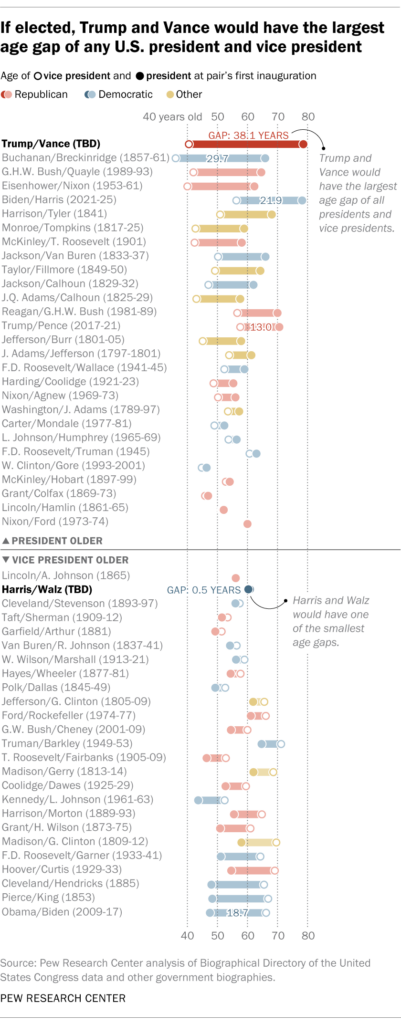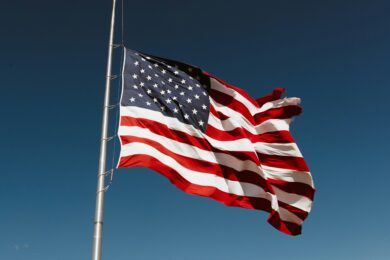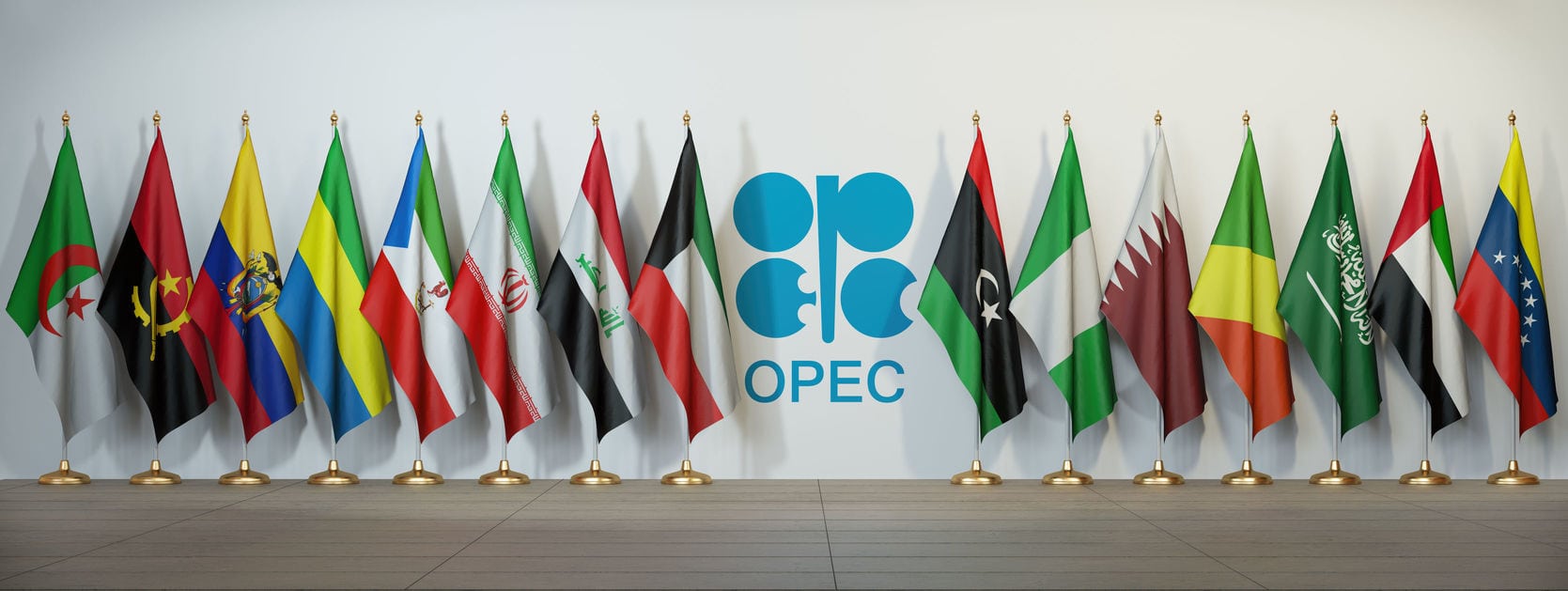
How age gaps between Trump-Vance and Harris-Walz could influence the 2024 US election
- Age gaps in presidential races can reflect broader generational dynamics and influence voter perceptions.
- Historically, median age gap between presidents and vice presidents has been modest.
- Age gap of 18.4 years between Trump and Harris is the sixth largest in US history.
As the 2024 US presidential election approaches, the significant age differences between the leading candidates and their vice-presidential nominees are drawing attention.
This generational contrast could have a notable impact on the race, influencing voter perceptions and campaign dynamics.
Trump-Vance: Bridging a generational divide
Copy link to sectionFormer President Donald Trump, who will be 78 on Inauguration Day 2025, is set to be more than 38 years older than his running mate, Ohio Senator JD Vance, who will be 40.
If elected, this pairing would establish a record for the largest age gap between a US president and vice president, surpassing the current record by nearly a decade.
Trump’s choice of Vance, a member of the Millennial Generation, highlights a potential strategy to connect with younger voters and address the generational shift within the Republican Party.
Vance, known for his memoir Hillbilly Elegy, may appeal to the working-class voters Trump has historically championed.
However, some experts express concerns that such a substantial age gap could create challenges in policy alignment and governance.
The age difference could lead to varied priorities and decision-making styles, potentially affecting the administration’s cohesion and effectiveness.
Harris-Walz: A unifying generational pairing
Copy link to sectionIn stark contrast, if Vice President Kamala Harris and Minnesota Governor Tim Walz win the top offices, their six-month age difference would be among the smallest in US history.
Both were born in 1964, representing a close generational alignment that could foster a sense of unity and shared experience within the Democratic Party.
Historically, smaller age gaps between presidential and vice-presidential candidates are not unusual.
For instance, Abraham Lincoln and his second-term vice president, Andrew Johnson, were born just six weeks apart, and Richard Nixon and Gerald Ford had only about six months between them.
This close age range may project stability and continuity, appealing to voters seeking steady leadership.

Source: Pew Research Centre
Historical context: Age gaps in US presidential history
Copy link to sectionAccording to Pew Research Center, the median age gap between US presidents and vice presidents has been relatively modest at 6.7 years.
Of the 51 pairs who have held these offices, 59% had an age difference of less than 10 years.
Only four pairs have had a gap of 20 years or more, with the current record being 29.7 years between President James Buchanan and Vice President John Breckinridge.
What does the age-difference factor mean for the 2024 election?
Copy link to sectionThe age differences between Trump and Vance, and Harris and Walz, underscore the evolving nature of American politics.
While Trump’s advanced age might raise questions about his ability to serve a full term, Vance’s youth could be both an asset and a liability.
On the other hand, Harris and Walz’s close age alignment may symbolize a stable and consistent leadership approach.
These generational dynamics will likely influence voter perceptions and could play a significant role in the election.
As history shows, age differences between candidates often carry symbolic weight, reflecting broader political trends and shifts.
In the 2024 race, these age gaps will be just one of many factors shaping voter decisions and the overall electoral landscape.
More industry news







